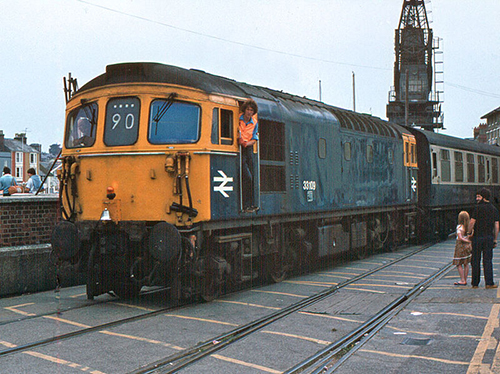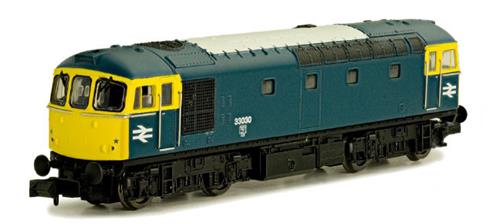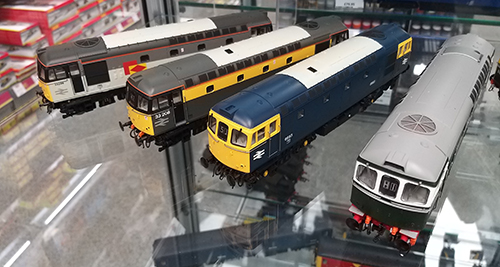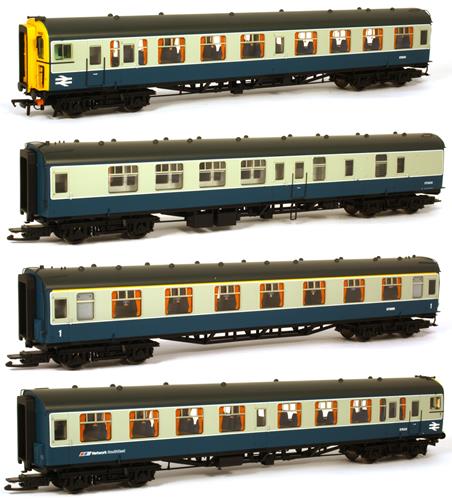

 IAN GARNHAM tells us about this BR Southern Region Locomotive.
IAN GARNHAM tells us about this BR Southern Region Locomotive.
The British Rail Class 33 Locomotive was ordered in 1957 and built between 1960 and 1962 by the Birmingham Railway Carriage and Wagon Company. A total of ninety-eight were constructed. The locomotive was also known as the BRCW Type 3, and was built exclusively for the Southern region. They quickly picked up the nickname "Cromptons" because of the Crompton Parkinson electrical equipment installed in them.
Of the initial eighty-six that were first built as standard, some were later modified to operate on the Waterloo to Weymouth service. At the time, electrification only went as far as Bournemouth, so before the 3rd rail was extended as far as Weymouth "Cromptons" fitted with push pull equipment took over. These versions gained the nickname "Bagpipes", because of the jumper cables located on each end of the locomotive to enable the Push-Pull operation. These maintained the service right up to when the electrification was continued down to Weymouth.

A Class 33 negotiates the Weymouth Harbour Tramway.
Under the TOPS scheme they were classified as Class 33 in three sub-divisions: 33/0, 33/1, and 33/2. The last twelve of the class were constructed for use on the Hastings line and because of the width restriction on tunnels between Tunbridge Wells and Hastings they were built 7 inches narrower than the standard version. Because of this, these particular locomotives gained the nickname "Slim Jim".
The Class started their working careers in the South-East and eventually over the whole Southern system. Class 33s were often seen on several interregional workings like the cement train which ran between Cliffe in Kent and York, as well as the aviation fuel oil train which ran from Fawley
The locomotives were originally turned out in green, but then were repainted in the corporate livery of blue with yellow ends. Since then they have been turned out in various other liveries from Railfreight grey to West Coast Railways.
A number have been rescued from the scrapheap and have found new homes on several preserved lines around the country, with at least a couple retained by mainline operators.
In model form we have had HO, OO and O Scale versions from Lima a good few years ago, then Hornby Railroad in OO and Graham Farish in N Scale around the same time.

Dapol Class 33 in N Scale.
More recently Dapol have produced the Class 33 in N Scale, with Heljan producing models of the Class 33 in OO Scale. We will soon have an O Scale model of the Class 33 from Heljan in current and original liveries. This is really a locomotive that no Southern Region layout should be without.

A selection of OO Scale Class 33s from Heljan.
If you are after suitable coaches to run with your OO Scale push-pull Class 33 then we have the highly detailed Bachmann 4TC sets available in original all blue livery, blue grey, Network South East and BR research livery.

Bachmann BR Blue/Grey 4TC Set.
Although they set looks like a conventional EMU, there are no traction motors fitted as per the real thing. The driver could control the driving locomotive from the appropriate end cab which would have been a Class 33 or Class 73. In many cases a 4 REP EMU (REP standing for Restaurant Electro Pneumatic Brake) and rated at 3,300hp would be part of a twelve car unit which could easily haul two TCs (Trailer Control).